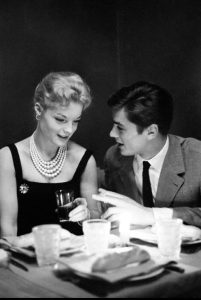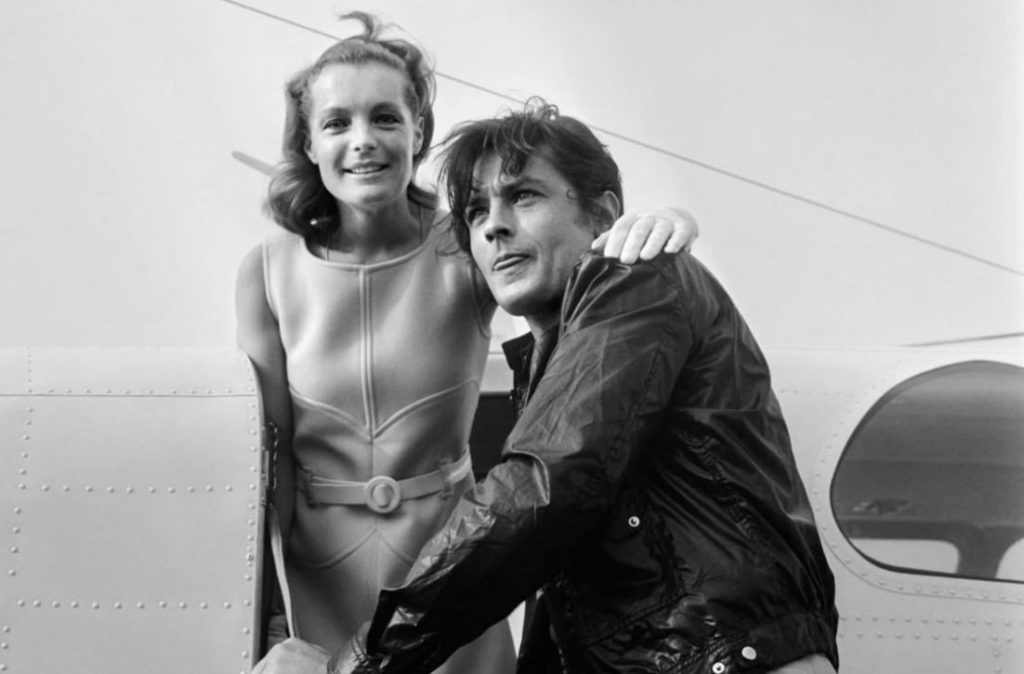For a brief moment, they had it all. But in 1964, after four years together—documented in endless tabloid coverage—golden couple Romy Schneider and Alain Delon split. Delon ended things with a note, a few scribbled lines that closed the door on what had been a fairytale romance to rival anything the actors had portrayed on screen.
Born on September 23, 1938, in post-Anschluss Vienna, Schneider—whose parents were both actors—attended boarding school, where she showed a natural talent for painting. Still, her mother, Magda, directed her striking daughter towards a career in film. Almost always flanked on set by her mother, Schneider was just 15 when she made her screen debut, in When the White Lilacs Bloom Again (1953).
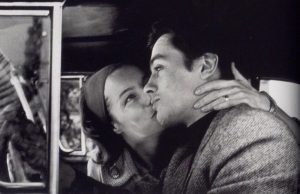
In 1955, she was cast as Empress Elisabeth of Austria in Sissi, the first installment of a trilogy that brought her immense popularity, but also pigeonholed her somewhat. After a series of sentimental movies in which she typically played the innocent ingenue, Schneider was desperate to change course.
Alain Delon was born in the French town of Sceaux on November 8, 1935. His childhood was not easy: He was just four years old when his parents divorced and his father, Fabien, disappeared from his life for several years. His mother, Edith, entrusted him to the care of a foster family ,where he remained until he was eight; at which point he moved to a boarding school run by nuns in Issy-les-Moulineaux. Angry at the world and rebellious by nature, he went from one school to another until, at 14, he quit school to work in a butcher’s shop.
After enlisting in the Navy at 17, Delon returned to France in 1956 and found work as a porter, clerk, and waiter in Montmartre and Halles. He befriended the actor Jean-Claude Brialy, who took Delon to the Cannes Film Festival, where his charisma and James Dean-esque good looks caught the attention of a 20th Century Fox producer. “I soon realized that women were crazy about me,” Delon wrote in his 2011 memoir, Les Femmes de ma Vie. “It was they, the women, who pushed me to do this job.”
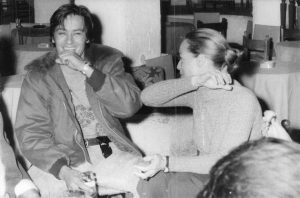
It was the film Christine (1958) that brought Schneider and Delon together. Directed by Pierre Gaspard-Huit and based on a play by Arthur Schnitzler, it represented a turning point in Schneider’s career, who was tired of being known only as Sissi, and the first major test for Delon. Despite their initial mutual distrust, the meeting proved fateful.
Schneider initially described Delon in her diaries as “too handsome, too young, too coiffed,” but their attraction was undeniable. As Delon himself would recall years later: “You were arriving from Vienna and I was waiting for you at the Paris airport with a bouquet of flowers that I didn’t know how to hold. But the producers had told me: ‘As soon as she comes down the runway go to her and hand her the flowers.’ I waited with the flowers in my hand like an imbecile, amidst a horde of photographers. You got off the airplane, I approached. You said to your mother, ‘That must be Alain Delon, my partner!’ Nothing else, no bolt of lightning out of the blue. So I went to Vienna, where the film was being shot, and it was there that I fell madly in love with you. And you fell in love with me.”
After the film wrapped, the couple moved in together in Paris.
The couple spent four years together, during which Delon became a leading man–and an international sex symbol. The legendary Luchino Visconti, struck by Delon’s expressive eyes, cast him in Rocco and His Brothers (1960), then directed both Delon and Schneider on stage in Paris in a production of John Ford’s Tis Pity She’s a Whore. “Visconti told us that we looked alike,” Delon said once, “and that we had in the middle of our eyebrows the same ‘V’ that wrinkled in anger, fear of life, and anguish.”
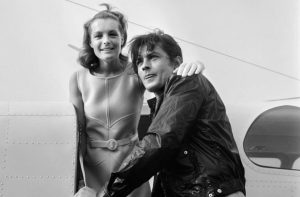
As Delon’s career was reaching new heights, his lover’s was slowing down. Constant tabloid rumors about Delon’s infidelity—always documented, frequently denied—did not help. In 1962 the singer and Andy Warhol muse Nico had a child, Ari, believed to be Delon’s. The actor never recognized the boy as his own, but the child was later adopted by Delon’s mother.
The couple weathered these early storms, and Delon gave Schneider—whom he called puppelé, or “baby doll”—an engagement ring. The wedding was postponed numerous times, and put off permanently when Delon met and fell for the 22-year-old model Nathalie Barthélémy.
By the time Schneider received a note from Delon ending things in 1964—allegedly reading, “I’m sorry. I know I would have made you unhappy. I’m leaving for Mexico with Nathalie. I wish you all the best!”—he was preparing to marry Barthélémy, already pregnant with their son, Anthony, who was born that same year. A devastated Schneider hastily married the German actor and director Harry Meyen in 1966, with whom she had a son, David.
Delon continued to be unfaithful after marrying Barthélémy, and his love affair with Schneider also apparently loomed large over their relationship. “He never spoke to me about her,” his former wife said after their marriage ended in 1969. “But sometimes I saw a shadow of sadness in his eyes and I knew it was for Romy.”
The end of the 1960s found Delon and Schneider on set together once again. Knowing Schneider was at a low point—and wracked with guilt over his treatment of her—Delon is said to have campaigned hard for her to be his co-star in La Piscine, a role earmarked for Monica Vitti. Set in a villa in Saint-Tropez over the course of a long, hot summer, the Jacques Deray drama—which captures the pair at the height of their beauty—became a cult success, and prompted countless rumors of an off-sceen reunion.
Instead, their former flame solidified into a lasting friendship. As Schneider said during filming: “The most important man in my life remains Delon. He is always ready to reach out to me. He would run to my aid at any time. Alain has never abandoned me to myself, neither today nor yesterday.”
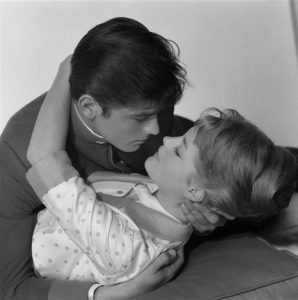
Schneider went on to become a style icon of the 1970s, but her personal life was marred by tragedy. After her marriage to Meyen ended in 1975, she walked down the aisle again with the Italian-French journalist Daniel Biasini, with whom she had a daughter, Sarah. But the marriage also floundered, and in 1979 her first husband died by suicide, a shock that precipitated her own battles with depression and alcoholism.
In July 1981, her son, David, died in a tragic accident at his grandparents’ house at just 14. His mother never recovered. In May the following year she was found dead in Paris at the home of producer Laurent Petin, to whom she had been linked for a year. Her cause of death was not suicide, but a heart attack. She was 43.
Delon, meanwhile, won a César in 1985, and a Golden Bear at the Berlin Film Festival. A string of relationships with beautiful women followed his failed marriage—including with Dutch model Rosalie van Breemen, with whom he had two more children, Anouchka Delon (born in 1990) and Alain-Fabien Delon (born in 1994).
The actor was said to have been tormented by his rift with Schneider, and he too struggled with depression in the 2000s.
Upon learning of her death, Delon rushed to his puppelé’s side, and wrote her a farewell letter in which he describes his desire to “devour [her] with glances.” “I fell hopelessly in love with you. And you fell in love with me. My God, how young we were, and how happy we were. Then our life, which concerns no one but us, separated us.
Almost 40 years after her death, in 2018 Delon had a message published in Le Figaro newspaper: “Rosemarie Albach-Retty a.k.a. Romy Schneider would be 80 years old today, Sunday, September 23. Let those who loved her and still love her send her a thought. Thank you. Alain Delon.”
On August 18, 2024, Delon died at 88 at his home in Douchy, France, surrounded by his three children.
